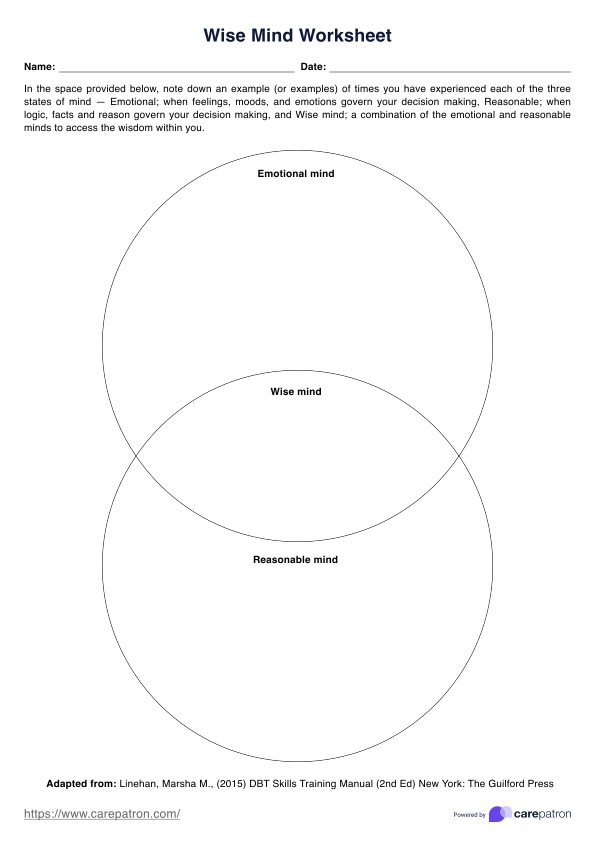When your clients complete this worksheet is up to you. In order to remove time pressure during your session, it can be a good idea to offer the worksheet for them to work on between sessions and bring back for you to discuss together once they have completed it. Alternatively, you may wish to help your client through each activity, in which case it can be completed during their session with you.

Wise Mind Worksheets
Make decisions from a place of inner wisdom without relying solely on emotions or logic, and start by identifying the emotional, rational, and wise states of mind using our Wise Mind Worksheet, informed by principles of Dialectical Behavioral Therapy.
Wise Mind Worksheets Template
Commonly asked questions
While we’ve included a brief explanation at the top of this worksheet, practitioners experienced with DBT concepts will be able to help their clients get the most out of this worksheet. As such, having a grounding in Dialectical Behavioral Therapy and the Wise Mind concept is recommended.
The Wise Mind is a name given in DBT to the inner wisdom we all possess. The Wise Mind is one of three mindsets, including the reasonable and emotional minds. While the emotional mind is guided by feelings and the reasonable mind is guided by logic and reason, the wise mind is informed by both emotion and reason to achieve true, personal wisdom and help your clients make wise decisions for themselves.
EHR and practice management software
Get started for free
*No credit card required
Free
$0/usd
Unlimited clients
Telehealth
1GB of storage
Client portal text
Automated billing and online payments











